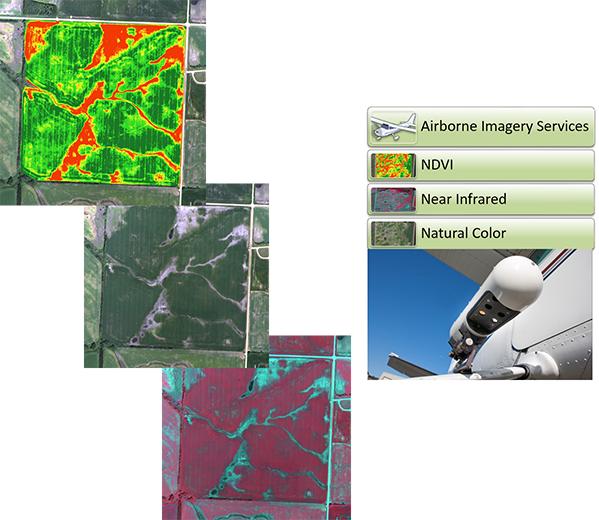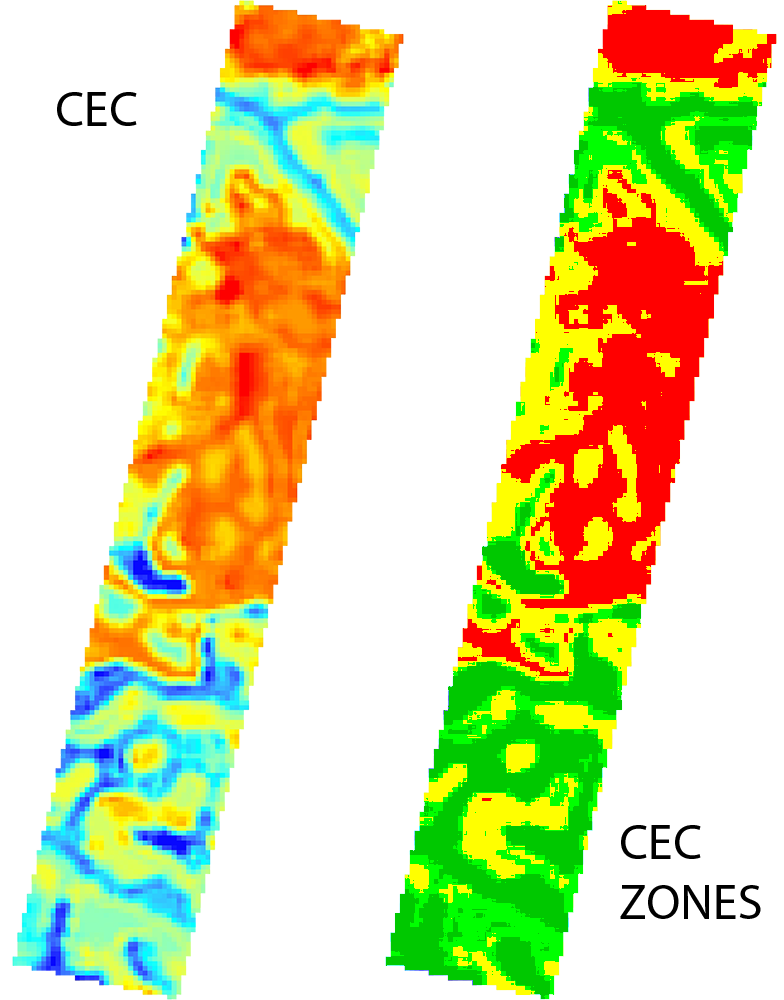Precision Agriculture
 "
"
Crop Imagery

Airborne Imagery
Multispectral aerial imagery is a valuable resource for applying precision agriculture techniques. It provides a visual assessment of crop health and vigour and can be used to identify issues with drainage, insects, diseases and nutrient deficiencies. It can be obtained from satellites, fixed wing aircraft, and UAVs each having their own benefits and unique data products.
Imagery obtained from sensors on small airplanes is best for image quality and when numerous fields are required over a medium sized area.
FieldTRAKS works with GeoVantage to deliver colour, NDVI and IR imagery ranging in resolution from 25 cm to 1 metre. Data products may be delivered using the FieldTRAKS mobile app for access in the field and as GIS ready files. Flights may be scheduled in advance and will fly when conditions will provide for 100% cloud-free products. Turn around time on orders is generally within 5-7 days during the season and typically cost between CDN$2.50-3.50/acre depending on order size and resolution.
Management Zone Mapping
Smart Soil Sampling App (Triple-S)
With the growing base of precision agriculture data there is evidence that crop response varies within a field and these variations can be attributed to differences in topography, drainage, soil texture and other physical and biologic factors. Given that much the variation in crop response can be associated with static physical properties, Management Zones can be delineated to identify areas within the field that might benefit from customized and target practices such as variations in seed population, hybrid selection, fertility application and chemical based treatments.
There is no single adopted method for delineating Management Zones. In many cases these are subjectively defined based on prior normalized crop performance measured though yield monitors or NDVI imagery. Ontario research has demonstrated that crop productivity is highly correlated with landscape convexities and concavities. Areas that are prone to moisture and nutrient/organic loss such as the crest of hills will tend to have poorer performance that those areas where moisture and nutrients are less limiting. Regardless of how the Management Zones are delineated, pedological differences such as texture, pH, soil type etc. between Management Zones of the same yield potential and topographic class may exist. The Smart Soil Sampling (Triple-S) application aids in building knowledge of these characteristics and this aids in the development and evaluation of prescriptions.
The Triple-S approach uses matrix modelling to reclassify selected input layers and to overlay the reclassed images to create a “unique conditions” map were each class on the map represents a unique set of input layer classes. The unique conditions map is then reclassified based on groupings defined by the User. The resulting reclassified map will delineate the sample zones which will be used to group soil sample collections.
Triple-S is currently being developed as a FarmHand module where additional observation data will help document the site, soil and crop characteristics.
